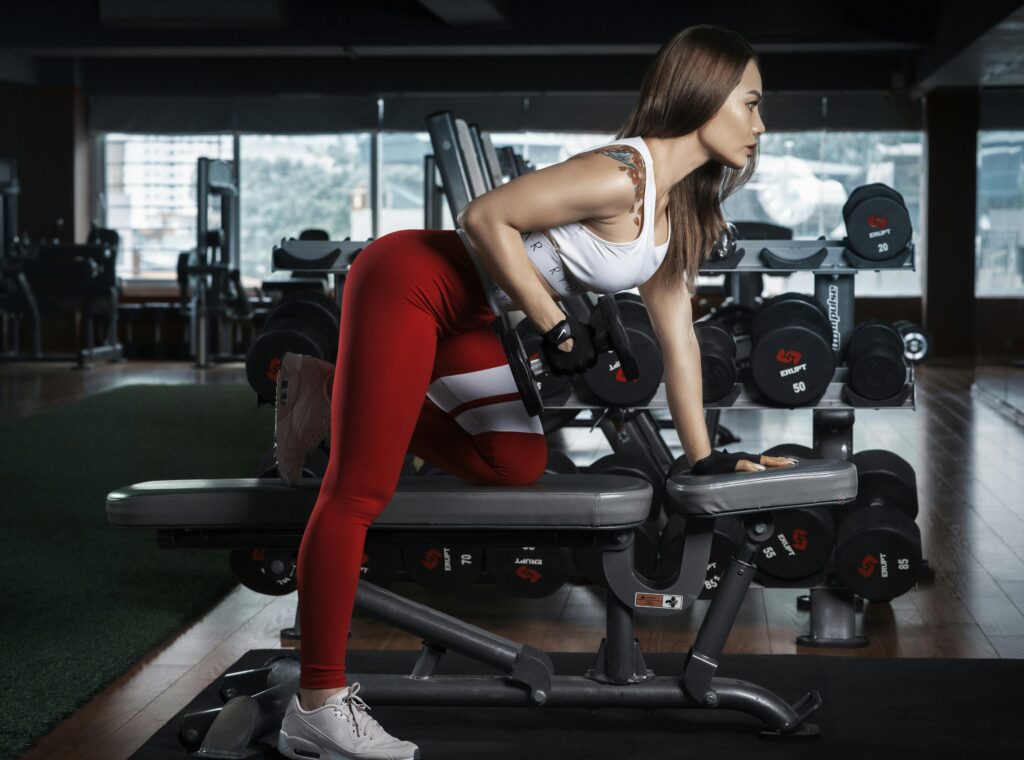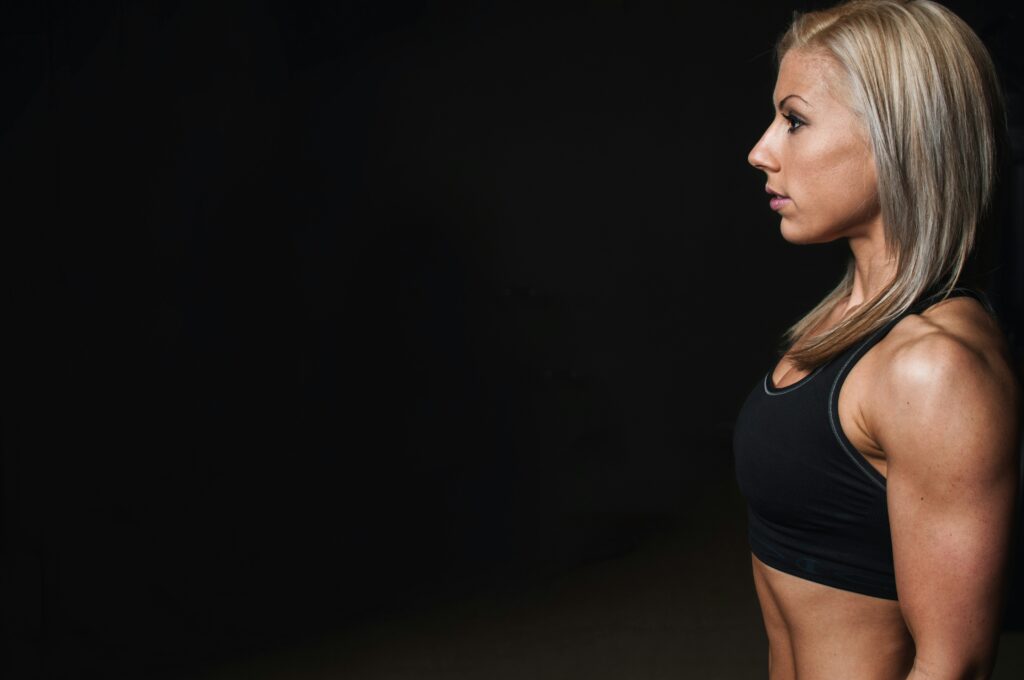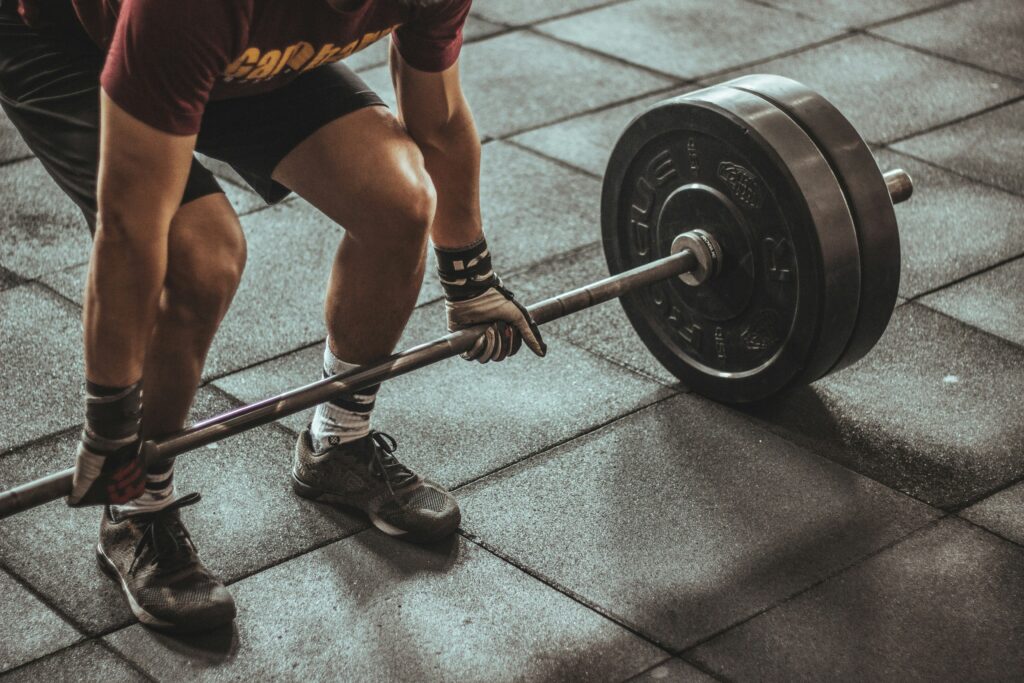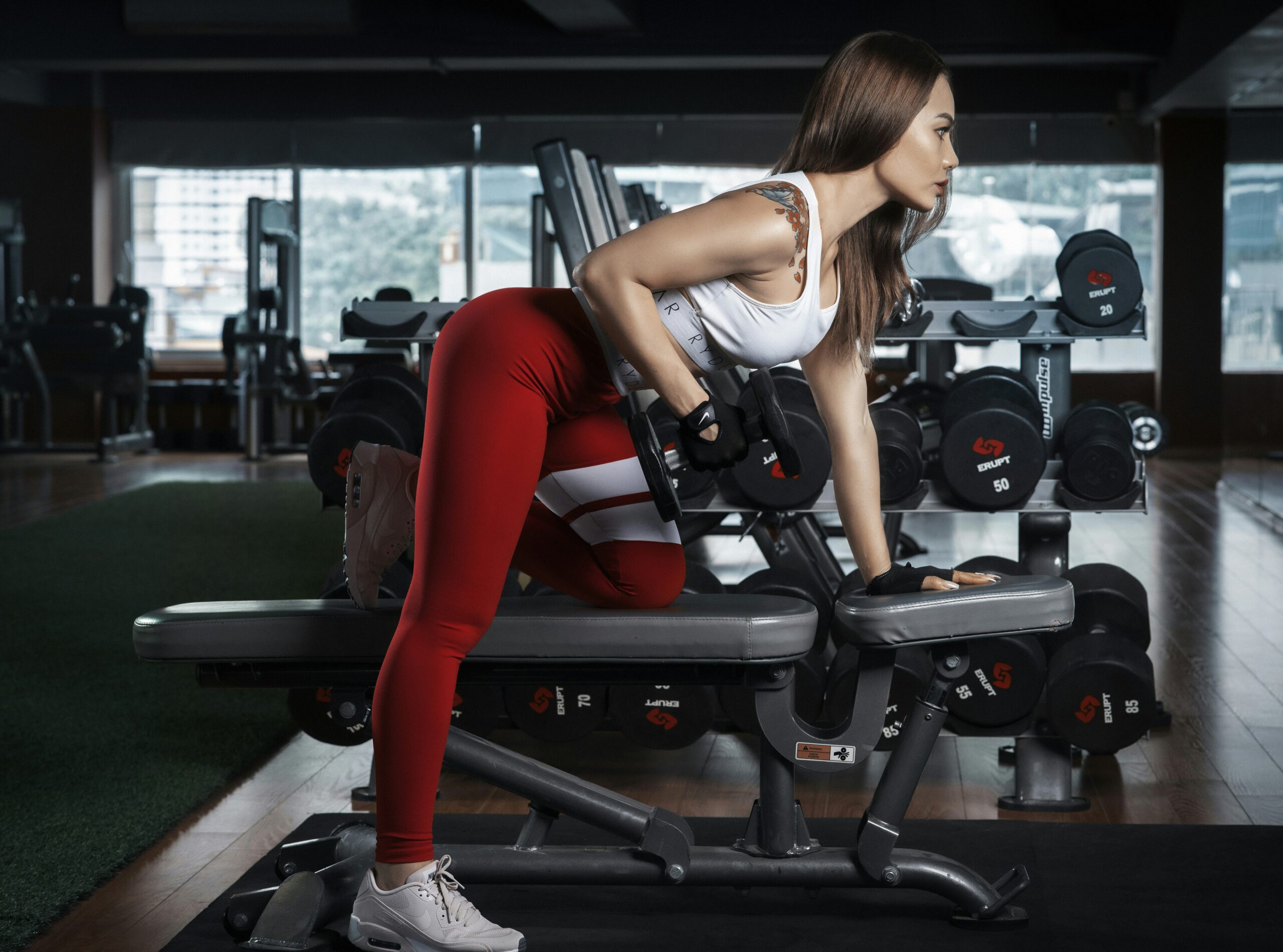Are you looking for a way to get fit from the comfort of your own home? Look no further than the 7 Day Workout Challenge! This article will provide you with a detailed plan to help you achieve your fitness goals without ever stepping foot outside. Whether you’re a beginner or an experienced fitness enthusiast, this challenge is designed to challenge your body and boost your strength and endurance. Get ready to sweat and see amazing results in just one week!
Day 1: Cardio Workout
Warm-up
To kick off your 7-day workout challenge, start with a cardio workout on day one. A proper warm-up is essential to prepare your body for the exercises ahead. Begin with light jogging in place, gentle arm swings, and leg stretches. This will increase your heart rate, warm up your muscles, and get your blood flowing.
Jumping Jacks
Jumping jacks are a classic exercise that works your entire body. Start by standing with your feet together and arms at your sides. Jump while simultaneously spreading your legs wider than shoulder-width apart and raising your arms above your head. Return to the starting position by jumping again and bringing your feet together while lowering your arms.
High Knees
High knees are a great way to get your heart rate up and work on your leg strength and coordination. Stand tall with your feet hip-width apart. Drive your right knee up towards your chest while hopping off your left foot. Alternate between your right and left knees as quickly as possible, engaging your core and pumping your arms for balance and momentum.
Mountain Climbers
Mountain climbers are an effective exercise that targets your core, upper body, and lower body. Start in a high plank position with your hands directly under your shoulders and your body in a straight line. Drive your right knee towards your chest, then quickly switch legs, extending your right leg back while pulling your left knee forward. Continue alternating your legs as if climbing a mountain.
Burpees
Burpees are a challenging full-body exercise that incorporates cardio, strength, and endurance. Begin by standing with your feet shoulder-width apart. Drop down into a squat position, placing your hands on the floor in front of you. Kick your feet back into a plank position, perform a push-up, then jump your feet back towards your hands. Finally, explosively jump into the air with your arms raised overhead.
Cool-down
After completing your cardio workout, it’s important to cool down and stretch your muscles. Walk or jog in place at a slower pace to gradually lower your heart rate. Perform gentle stretching exercises targeting your legs, arms, and core. This will help prevent muscle soreness and promote flexibility.
Day 2: Strength Training
Warm-up
Before diving into strength training, warm up your muscles with dynamic movements. Start with a brisk walk or jog, followed by arm circles, leg swings, and bodyweight squats. This will increase blood flow and flexibility, preparing your body for the exercises ahead.
Push-ups
Push-ups are a classic strength training exercise that effectively target your chest, triceps, shoulders, and core. Begin in a high plank position with your hands slightly wider than shoulder-width apart. Lower your body towards the floor by bending your elbows, keeping your body in a straight line. Push back up to the starting position using your chest and triceps muscles.
Squats
Squats are a compound exercise that engage multiple muscle groups, including your quadriceps, hamstrings, glutes, and core. Stand with your feet shoulder-width apart and toes slightly turned out. Lower your body by bending your knees and hips, as if sitting back into an imaginary chair. Keep your chest lifted and knees in line with your toes. Push through your heels to stand back up.
Plank
Planks are an excellent exercise for core strength and stability. Begin by lying face down on the floor, then lift your body up onto your elbows and toes. Keep your body in a straight line from head to heels, engaging your core muscles. Hold this position for a specified amount of time, focusing on maintaining proper form and breathing.
Lunges
Lunges are a great way to target your legs and glutes while improving balance and coordination. Start by standing with your feet hip-width apart. Take a big step forward with your right foot, keeping your torso upright. Lower your body until your right thigh is parallel to the floor, with your right knee directly above your ankle. Push through your right heel to return to the starting position. Repeat on the other side.
Cool-down
After completing your strength training session, it’s important to cool down and stretch your muscles. Take a few minutes to walk or perform gentle movements to gradually reduce your heart rate. Stretch your muscles, focusing on the areas you worked during your strength training exercises. This will help improve flexibility and prevent muscle tightness.

This image is property of images.unsplash.com.
Day 3: Yoga for Flexibility
Warm-up
Before starting your yoga routine, warm up your body with gentle movements. Start by standing tall and focusing on deep breathing. Gradually move your body, incorporating stretches for your neck, shoulders, arms, and legs. This will help loosen up your muscles and prepare you for the yoga poses ahead.
Sun Salutations
Sun salutations are a series of flowing movements that engage the entire body and provide a great warm-up for yoga practice. Begin standing at the front of your mat with your feet hip-width apart. Inhale as you raise your arms overhead, then exhale as you fold forward, reaching towards your toes. Inhale to a halfway lift, lengthening your spine, then exhale as you step or jump back into a plank position. Continue flowing through these movements, incorporating modifications if needed.
Warrior Pose
Warrior poses are foundational standing yoga poses that build strength, balance, and flexibility. Warrior I is performed by stepping one foot back, keeping your back foot at a 45-degree angle and bending your front knee. Raise your arms overhead, keeping your gaze forward. Warrior II is a variation where your arms are extended out to the sides. Hold each pose for several breaths, focusing on your alignment and maintaining a steady breath.
Downward Dog
Downward dog is a classic yoga pose that stretches the entire body, particularly the hamstrings, calves, and shoulders. Start in a high plank position, then lift your hips up and back towards the sky, creating an inverted “V” shape with your body. Press your hands firmly into the mat, lengthen your spine, and engage your core. Pedal your feet to stretch your calves and alternate bending your knees to extend the stretch in your hamstrings.
Child’s Pose
Child’s pose is a gentle resting pose that helps release tension in the back, hips, and shoulders. Begin by kneeling on the floor, then lower your body down towards your thighs, extending your arms forward or resting them alongside your body. Relax into the pose, allowing your breath to deepen and your muscles to relax. This is a great pose to return to whenever you need a moment of rest during your yoga practice.
Cool-down
After completing your yoga routine, take a few minutes to cool down and allow your body to relax. Slowly return to a seated position and focus on your breathing. Perform gentle stretches, targeting the areas you worked during your yoga practice. This will help promote flexibility and a sense of calmness.
Day 4: HIIT Workout
Warm-up
Before diving into a high-intensity interval training (HIIT) workout, warm up your muscles with dynamic movements. Start with light jogging or jumping jacks to increase your heart rate and warm up your cardiovascular system. Perform arm circles and leg swings to loosen up your muscles and prepare for the intense workout ahead.
Jump Squats
Jump squats are a power-packed exercise that combines squatting and explosive jumping. Start with your feet shoulder-width apart, then lower your body into a squat position. As you come up, explode off the ground, driving your arms upwards. Land softly with bent knees and immediately go into the next repetition.
High Knees
High knees are a great cardiovascular exercise that elevates your heart rate and engages your core and leg muscles. Stand tall with your feet hip-width apart, then start jogging in place while driving your knees up towards your chest. Try to maintain a quick and steady pace throughout the exercise, pumping your arms for added momentum.
Burpees
Burpees are a challenging full-body exercise that combines strength and cardio. Begin in a standing position, then drop down into a squat and place your hands on the floor in front of you. Jump or step your feet back into a plank position, perform a push-up, then jump or step your feet back towards your hands. Finally, explosively jump into the air, reaching your arms overhead.
Mountain Climbers
Mountain climbers are a high-intensity exercise that work your core, upper body, and lower body. Start in a high plank position with your hands directly under your shoulders and your body in a straight line. Drive one knee in towards your chest, then quickly switch legs, alternating the movement as if climbing a mountain. Keep your core engaged and maintain a quick pace throughout the exercise.
Cool-down
After completing your HIIT workout, it’s important to gradually bring your heart rate down and allow your body to recover. Slowly reduce the intensity of your movements, transitioning from high-impact exercises to low-impact activities. Perform light jogging or walking in place to gradually lower your heart rate, then finish with static stretches for your muscles, focusing on the areas you worked during the workout.

This image is property of images.unsplash.com.
Day 5: Core Workout
Warm-up
Before targeting your core muscles, warm up your body with dynamic movements. Start with light jogging or marching in place to increase your heart rate and warm up your cardiovascular system. Perform arm circles, torso twists, and hip circles to loosen up your muscles and prepare for the core exercises ahead.
Plank
The plank is a foundational core exercise that targets your entire abdominal region, as well as your shoulders, back, and glutes. Start in a high plank position with your hands directly under your shoulders and your body in a straight line. Engage your core muscles and hold the position, making sure to keep your hips level and your neck in a neutral position. Start with a comfortable duration and gradually increase the time as your abdominal strength improves.
Crunches
Crunches are a classic core exercise that primarily target your rectus abdominis, the muscle responsible for creating the “six-pack” appearance. Lie on your back with your knees bent and feet flat on the floor. Place your hands behind your head, but avoid pulling on your neck. Lift your shoulders off the ground, engaging your core, and lower back down in a controlled manner. Focus on the quality of the movement, rather than the quantity of reps.
Russian Twists
Russian twists are an effective exercise that engages your entire core, particularly your obliques. Sit on the ground with your knees bent and feet lifted slightly off the floor. Lean back slightly while keeping your back straight and your core engaged. Rotate your torso to the right, touching the ground next to your hip with your hands, then rotate to the left. Continue alternating sides in a controlled manner, feeling the burn in your obliques.
Leg Raises
Leg raises are a challenging exercise that targets your lower abs and hip flexors. Lie on your back with your legs straight and your arms by your sides. Use your core strength to lift your legs off the ground, keeping them straight and together. Slowly lower your legs back down towards the floor without touching the ground, then repeat the movement. Modify the exercise by bending your knees or placing your hands underneath your lower back for extra support.
Cool-down
After completing your core workout, it’s important to cool down and stretch your muscles. Gradually reduce the intensity of your movements and bring your heart rate down. Walk or perform light jogging in place to gradually decrease your heart rate. Perform gentle stretches, focusing on your core muscles and any other areas that feel tight or fatigued. This will help prevent muscle soreness and promote flexibility.
Day 6: Pilates Routine
Warm-up
Before starting your Pilates routine, warm up your body with gentle movements. Begin by focusing on your breath, taking deep inhales and exhales to oxygenate your body. Perform gentle stretches for your neck, shoulders, arms, and legs to release any tension and prepare your body for the precise movements ahead.
Hundreds
The hundreds exercise is a foundational Pilates move that targets your core, particularly your deep abdominal muscles. Start by lying on your back with your legs straight and arms by your sides. Lift your head, neck, and shoulders off the ground, engaging your core. Pump your arms up and down in a controlled manner as you inhale for five counts and exhale for five counts. Repeat this pattern for a specified number of breaths.
Roll-ups
Roll-ups are a challenging Pilates exercise that strengthen your core and improve spinal mobility. Begin by lying on your back with your arms extended overhead and your legs straight. Slowly roll up, one vertebra at a time, until you are in a seated position with your arms reaching towards your feet. Roll back down in a controlled manner, segment by segment, until you are lying flat on the ground. Focus on initiating the movement from your core rather than using momentum.
Side Planks
Side planks are excellent for targeting your oblique muscles and building overall core strength and stability. Start by lying on your side with your forearm on the ground and your feet stacked on top of each other. Lift your hips off the ground, creating a straight line from your head to your feet. Engage your core and hold the position for a specified amount of time. Repeat on the other side.
Leg Circles
Leg circles are a challenging Pilates exercise that target your lower abs, hip flexors, and outer thighs. Lie on your back with your legs extended towards the ceiling. Circle your legs in a clockwise motion, keeping them straight and together. Focus on engaging your core and maintaining control throughout the movement. After completing the specified number of circles, repeat in a counter-clockwise direction.
Cool-down
After completing your Pilates routine, take a few minutes to cool down and stretch your muscles. Transition to a seated or lying position and focus on your breath, allowing your body to relax and recover. Perform gentle stretches, focusing on your core muscles and any other areas that feel tight or fatigued. This will help prevent muscle soreness and improve flexibility.

This image is property of images.unsplash.com.
Day 7: Full Body Workout
Warm-up
Before engaging in a full-body workout, warm up your muscles with dynamic movements. Start by jogging in place or performing light cardio exercises to elevate your heart rate. Incorporate arm circles, leg swings, and bodyweight squats to activate your muscles and prepare your body for the exercises ahead.
Jumping Jacks
Jumping jacks are an excellent exercise to warm up your entire body and increase your heart rate. Start by standing with your feet together and arms at your sides. Jump while simultaneously spreading your legs wider than shoulder-width apart and raising your arms above your head. Return to the starting position by jumping again and bringing your feet together while lowering your arms.
Squats
Squats are a fundamental exercise that engages your lower body, including your quadriceps, hamstrings, glutes, and calves. Start with your feet shoulder-width apart, toes slightly turned out. Lower your body by bending your knees and hips, as if sitting back into an imaginary chair. Keep your chest lifted and your knees in line with your toes. Push through your heels to stand back up.
Push-ups
Push-ups are a classic exercise that target your chest, triceps, shoulders, and core. Begin in a high plank position with your hands slightly wider than shoulder-width apart. Lower your body towards the floor by bending your elbows, keeping your body in a straight line. Push back up to the starting position using your chest and triceps muscles.
Plank
The plank is a key exercise for strengthening your core, as well as your shoulders, back, and glutes. Start in a high plank position with your hands directly under your shoulders and your body in a straight line. Engage your core, keeping your hips level and your neck in a neutral position. Hold the plank position for a specified amount of time, focusing on maintaining proper form and breathing.
Cool-down
After completing your full-body workout, it’s important to cool down and stretch your muscles. Perform light cardio exercises, such as walking or jogging in place, to gradually lower your heart rate. Incorporate gentle stretching exercises for your entire body, paying attention to the muscle groups you targeted during your workout. This will help prevent muscle soreness and promote flexibility.
In conclusion, a good 7-day workout plan at home consists of a combination of cardio, strength training, yoga, HIIT, core exercises, and Pilates. By following this comprehensive plan, you can effectively target different muscle groups, improve cardiovascular fitness, increase flexibility, and enhance overall strength and endurance. Remember to start each day with a warm-up to prevent injuries and cool down with stretches to promote recovery. Stay committed, be consistent, and enjoy the journey towards a fitter and healthier you!

